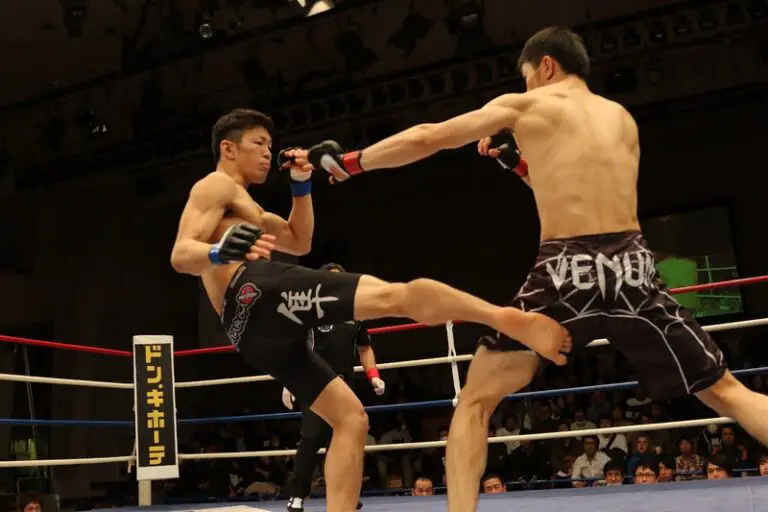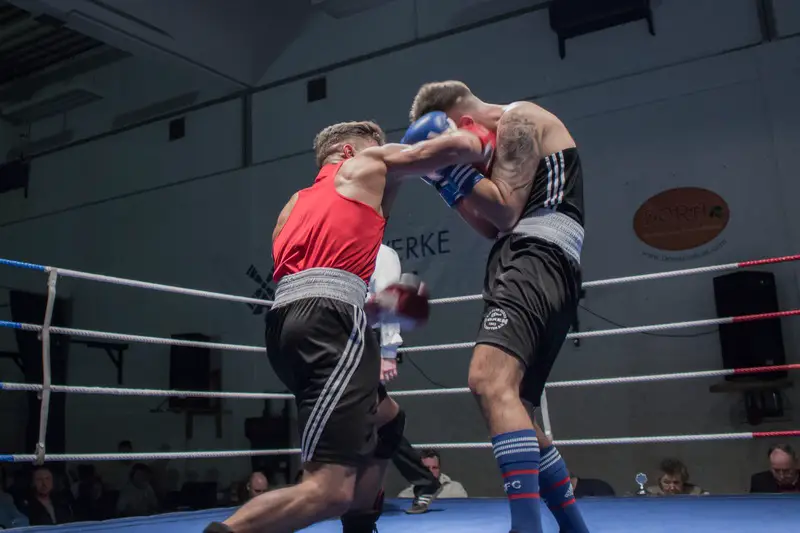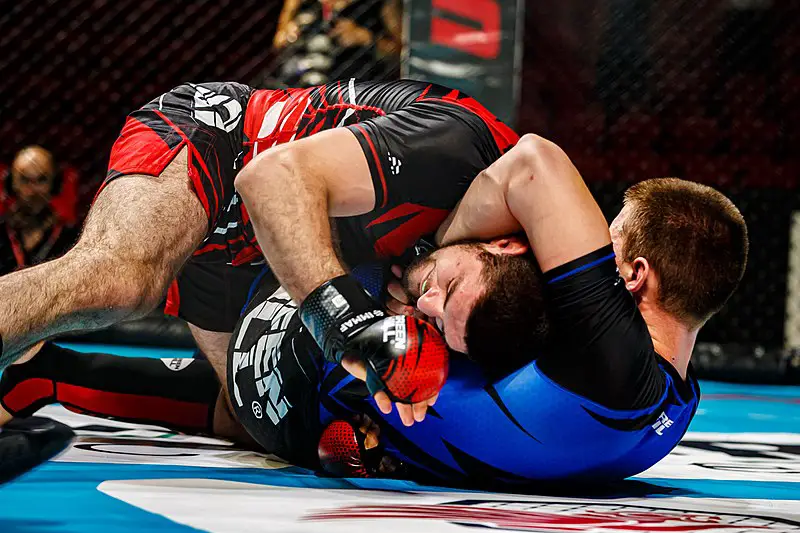Modern MMA is a combat sport where fighters compete on the feet, clinch, and on the ground. On the feet, the sport requires striking using all limbs, at all ranges, and only one martial art fits that category. Yes, it’s Muay Thai.
Muay Thai plays a key role in MMA where it is considered a total package as its concept of full-contact striking with eight points of contact fits well within the rules of cage fighting. It is the only system, at least globally recognized, that covers all the elements of MMA striking.
Let’s further explore the pros and cons of Muay Thai for MMA, as well as the limitations.
How Effective is Muay Thai for MMA
According to statistics, Muay Thai has produced the third most UFC champions, more than any other striking martial art. UFC legends like Anderson Silva, José Aldo, and Joanna Jędrzejczyk and their successes are just some of the most notable representatives of Thai boxing, and there are hundreds of others.
The key reason why Muay Thai is so effective in MMA is because the entire concept fits well within the rules. The striking concept in MMA is unique because it requires full-contact striking at all ranges, using all limbs (hands, legs, knees, and elbows), including inside the clinch.
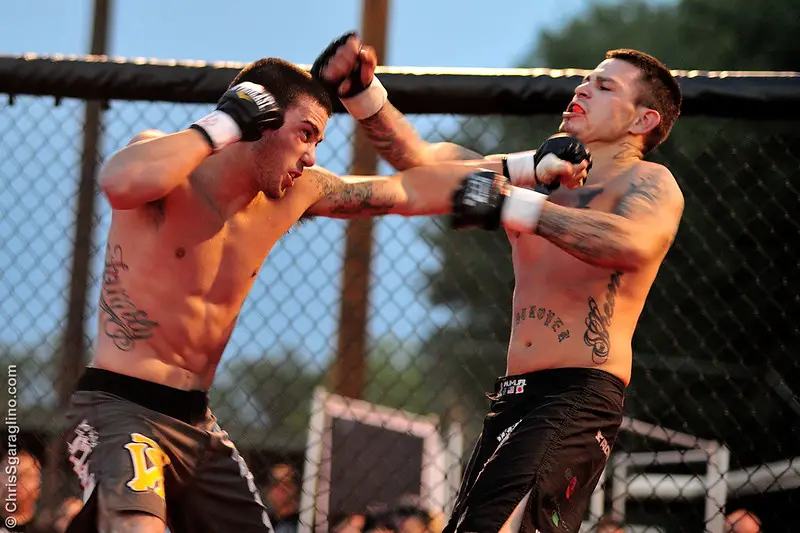
Out of all globally spread and accessible martial arts, Thai boxing is the only one that meets all the criteria. Boxing, Western Kickboxing, karate, and Taekwondo, all of these systems have certain limitations in MMA. For instance, boxing doesn’t have kicks, while kickboxing doesn’t include clinch.
On top of that, the art of Thai boxing teaches limited clinch grappling such as trips and throws, which adds to its effectiveness in MMA.
Let’s further explore the reasons why Muay Thai works so well in cage fighting, and dive into specific reasons.
Why Muay Thai is Effective in MMA?
The key reasons are striking versatility, especially the powerful kicks that are important in MMA as well as the durability and toughness of Thai boxers, and their ability to adapt to the sport and learn more techniques.
Here is a detailed explanation.
Striking versatility
Thai boxers are equipped with a diverse array of techniques that cover all the aspects of MMA striking. The concept emphasizes hard kicks from the distance, western boxing techniques, as well as elbow and knee strikes at close range and inside the clinch. This way Thai boxing covers all the ranges in MMA, and unlike other martial arts, teaches how to strike using all limbs.
- Punches (jab, cross, hook, uppercut, combinations)
- Kicks (roundhouse low/high kick, front kick (teep), side kick)
- elbows (horizontal, downward, spinning elbow)
- Knees (straight knee, flying knee, jumping knee)
Range control and distance management
Muay Thai excels through techniques like teeps (push kicks), front kicks, and long-range punches enabling fighters to maintain a comfortable distance from opponents or create openings for subsequent attacks.
In stand-up exchanges, Muay Thai fighters control the fight using a versatile set of striking techniques. They seamlessly transition between striking at a distance using a long-range shot, battling for a position in the clinch, and using short-range techniques to destroy the opponent. From there, they may engage in the grappling exchange or quickly separate and get back to the distance.
Clinch fighting
The clinch work in Muay Thai is a standout feature that sets it apart from other combat systems. Its fighters are the only strikers who can get the most out of this segment. First, they know how to secure a position to break the opponents’ posture before unloading with knees and elbows to the head and body.
They also use these skills to wear the opponent down as battling inside the clinch burns a lot of energy.
Durability and cardio
Thai boxing is one of the most brutal combat systems. The sport emphasizes full-contact striking and throwing each shot with full power and the goal to hurt the opponent as much as possible. Strength and conditioning workouts are intense and aim to physically and mentally prepare fighters to absorb punishment.
As a result, they are among the most durable MMA fighters who are incredibly hard to put out. They are also celebrated for having deep gas tanks, which is not a surprise considering the intensity of their cardio workouts. Thai boxers in Thailand, for instance, run around 10 miles just to warm up.
Powerful kicks and their impact in MMA
Low/high kicks play a key role in modern MMA. Leg kicks are employed to disrupt opponents’ movement, compromise their balance, and potentially hinder their mobility throughout the fight. In recent years, landing calf kicks has become the most used technique.
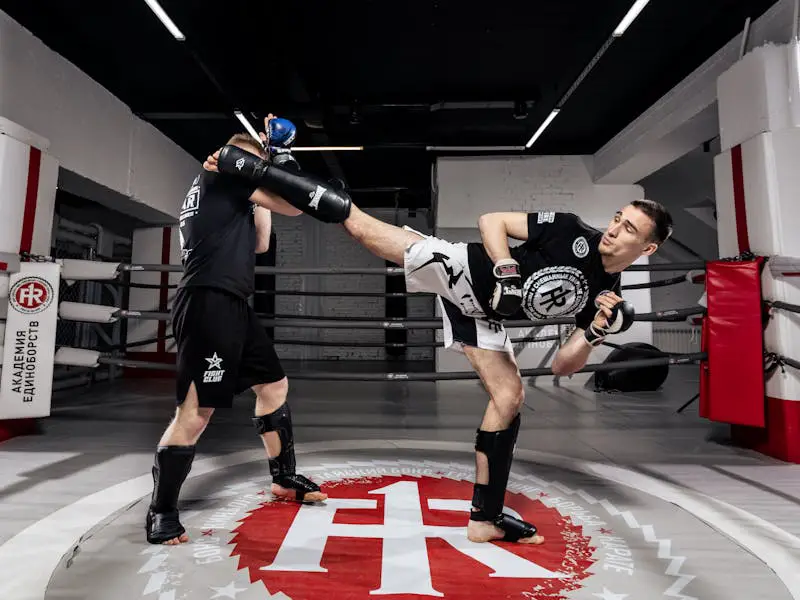
Meanwhile, high kicks serve as effective tools for targeting the head and body. These are more powerful and do more damage, allowing the fighters to finish the fight with one well-placed shot.
Compatible with other disciplines
Since the concept of Muay Thai covers the striking segment well, fighters can switch their focus on adding BJJ and defensive wrestling skills to their game, and develop the all-around skills required for cage fighting. The same stands for grappling-based fighters who, upon switching to MMA, spend a lot of time training in a proper Muay Thai gym to improve their striking.
Are there any limitations to using Muay Thai in MMA?
While Muay Thai is a powerful striking art in MMA, it does have limitations that fighters must address for a well-rounded skill set.
Lack of grappling/ground game
One significant drawback is its relative lack of emphasis on the grappling game. Though the concept includes trips and throws, this is not enough for MMA where Thai boxers are vulnerable to takedowns. Opponents who excel in wrestling or Brazilian Jiu-Jitsu can exploit this weakness, taking the fight to the mat where Muay Thai’s strengths are diminished.
Lack of mobility and movement
Thai boxers are usually trained to stay in the upright stance, right in front of the opponent, often flat-footed. They rarely apply footwork and lateral movement but rather prefer to face the opponent directly. The same stands for head movement as they prefer to take shots on the guard and counterattack rather than slipping and evading shots.
Potential predictability
Another potential limitation lies in the predictability of striking patterns. Skilled opponents may study and anticipate Muay Thai techniques, potentially countering them with diverse striking styles. This predictability can be a double-edged sword, as opponents may find opportunities to exploit defensive gaps and disrupt the Muay Thai practitioner’s rhythm.
Addressing weaknesses through cross-training
To overcome these limitations, fighters often address the weaknesses of Muay Thai through cross-training. Incorporating disciplines such as wrestling and Brazilian Jiu-Jitsu into their training regimen allows practitioners to round out their skill sets.
This not only enhances their ability to defend against takedowns and navigate the ground game but also adds layers of unpredictability to their overall striking approach.
How Often Do MMA Fighters Train Muay Thai?
Many elite fighters dedicate specific sessions to Muay Thai, ranging from two to four times per week. These sessions typically include a focus on skill-specific drills such as working on the pads to improve the form and muscle memory or sparring to further sharpen the skills.
However, the training frequency may vary based on individual preferences, fight strategies, and the fighter’s existing skill level. Grappling-based athletes tend to spend a lot of time because they need to improve their standup game as quickly as possible to complement their wrestling and grappling.
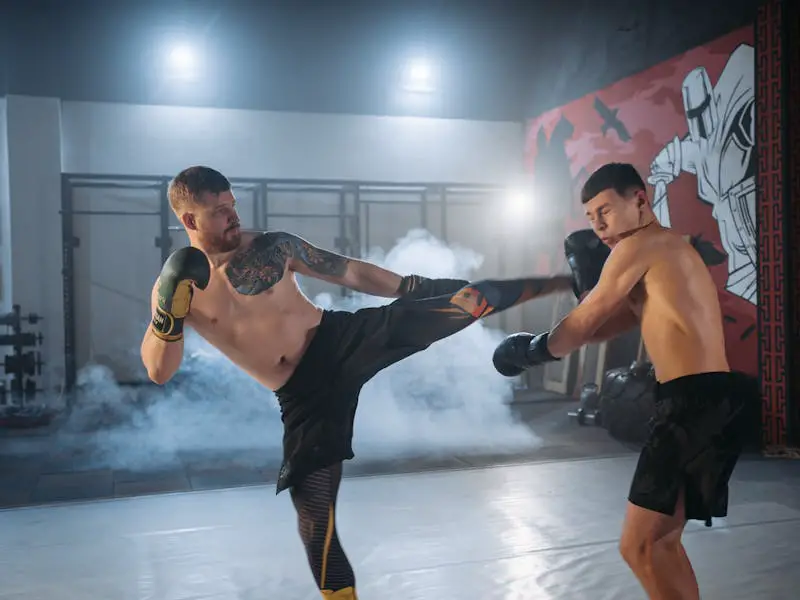
The same stands for fighters who come from other striking arts such as boxing who must work on the stances, clinch game, and kicks.
How Long Does it Take To Learn Muay Thai?
Who Are The Best Muay Thai Fighters in UFC?
Best Muay Thai-based UFC fighters are also some of the most accomplished ones and true legends of the sport like:
- Anderson Silva — a former UFC 185-pound Champion, Silva is known for his exceptional Muay Thai techniques that contributed to his legendary reign in the middleweight division.
- Jose Aldo — former UFC 145- pound Champion, Aldo has a Muay Thai base that includes powerful leg kicks, quick combinations, and excellent striking defense.
- Valentina Shevchenko — is a former UFC Women’s Flyweight Champion. She is a former multiple World Champion in Muay Thai and perhaps the best and most technical female MMA striker in history.
- Jon Jones — is widely regarded as one of the greatest MMA fighters of all time. Jones incorporates a diverse array of striking techniques in his fights, including elements of Muay Thai. Known for his elbow strikes, kicks, and clinch work, Jones’ striking versatility has played a crucial role in his success across multiple weight classes in the UFC.
- Edson Barboza — is a Brazilian striker with a background in Muay Thai. Known for his explosive kicks, particularly his highlight-reel spinning wheel kicks, Barboza has showcased a Muay Thai-inspired striking style that has made him a formidable contender in the UFC lightweight division. His ability to mix traditional Muay Thai with other striking elements has been a key feature of his fighting style.
Final Thoughts on the Effectiveness of Muay Thai In MMA
Muay Thai is the most used striking martial art in MMA because it fits the best within the rules and technical demands of the sport. Out of all other striking arts, Thai boxing is the only one that covers all the MMA scenarios on the feet as the two sports share a lot in common when it comes to legal and illegal striking techniques.
On top of that, Thai boxing techniques and training is among the most advanced from the technical point of view, making its skills essential in any type of freestyle combat. Yes, the system comes with certain limitations like all other martial arts because MMA is a multi-disciplinary sport. Thus, each athlete, no matter how skilled they are on the feet, must learn other disciplines to develop all-around skills.
But if you are a fan of striking and want to get into MMA, then Muay Thai is an ideal base for you.
